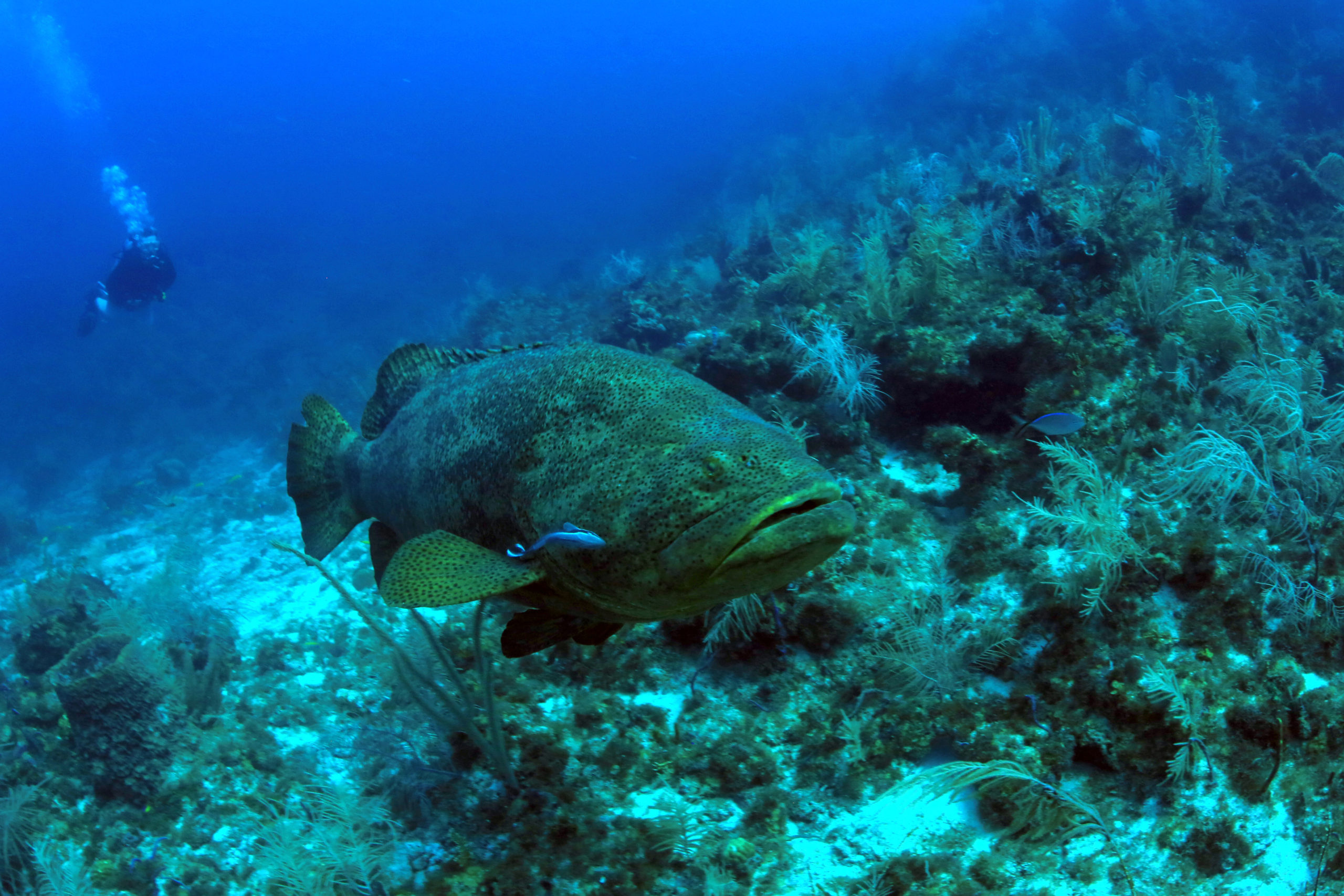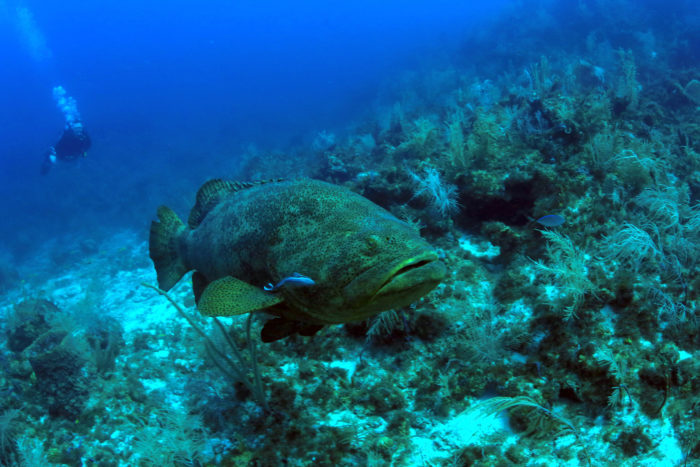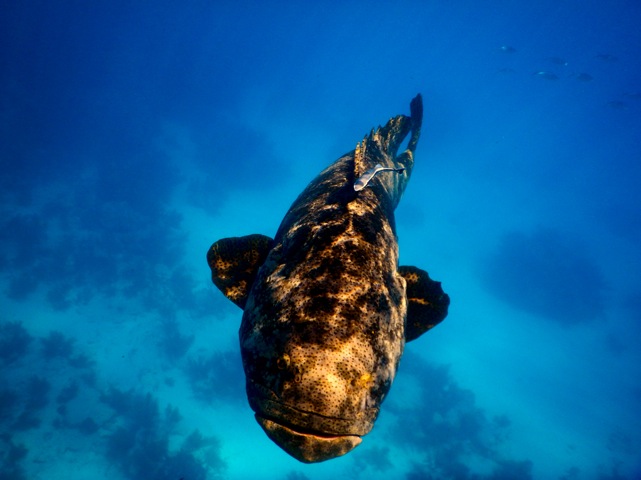
Sea Wonder: Goliath Grouper

A diver swims behind a goliath grouper. Photo credit: DRTO
DESCRIPTION
The goliath grouper lives up to its giant name as one of the largest species of grouper in the Atlantic Ocean. These fish can grow to over eight feet long and weigh as much as eight hundred pounds! Despite their size, their mottled yellow-brown and gray spotted coloring acts as camouflage that helps them blend into their rocky coral and muddy inshore habitat. They have a rounded snout and small eyes, with a short fan-shaped tail fin. If you are lucky, you might spot one of these gentle giants while diving into Florida Keys National Marine Sanctuary!
DIET & HABITAT
The goliath grouper lives from tropical to temperate latitudes in the western Atlantic Ocean, from Florida to Brazil. The goliath’s preferred habitat is in shallow, nearshore waters on coral reefs and mangroves. Juveniles often shelter in mangroves and brackish estuaries near oyster bars for the first few years of their life. Adults are solitary creatures and tend to be territorial of a small home range, with areas to hide in such as caves or wrecks.
Before fully grown, they are prey for barracuda, king mackerel and moray eels, and even some sharks, including the sandbar shark and hammerheads. Once they reach mature size, as one of the largest predators on coral reefs, the goliath grouper’s only predators are large sharks and humans.
The goliath grouper is an opportunistic predator, which feeds mostly on slow-moving benthic species such as spiny lobster, shrimp, crabs, stingrays, and even the occasional octopus or young sea turtle. The goliath’s sharp teeth are specially adapted to capture prey and prevent escape. By using the element of surprise, they can ambush their unsuspecting prey and swallow them in a single gulp.
LIFE HISTORY
The goliath grouper has a fairly long lifespan, and some may live for as long as 37 years. They reach reproductive maturity at around age five or six due to their slow growth rate. One unusual trait of the goliath grouper is that some scientists believe that they may begin their lives as females and then later transition to male. Despite their solitary nature, during their summer spawning season, spawning aggregations of up to one hundred individual fish convene to migrate to their spawning habitat. Once they arrive, goliath grouper reproduce by a process known as broadcast spawning, where the females release eggs and males release sperm into the water in a synchronized manner. This increases the likelihood that the eggs will become fertilized and avoid predation. The fertilized eggs drift on the currents into pelagic waters, and the next generation begins their life cycle.
THREATS & CONSERVATION
The goliath grouper is classified as Vulnerable by the International Union for Conservation of Nature’s Red List, and were once considered for listing under the Endangered Species Act.
The goliath grouper’s large size, slow growth and reproductive rate, and predictable spawning aggregations all make the goliath grouper particularly vulnerable to overfishing. Scientists believe that historical fishing practices led to a population decline of almost 80% over the last few generations. Goliath grouper had been targeted by commercial and recreational fishermen since the late 1800s, but since 1990 the species has been protected in U.S. waters. The goliath grouper fishery is closed to harvest by the South Atlantic, Gulf of Mexico, and Caribbean fishery management councils. Current threats to the species include residential and commercial development, habitat loss, climate change, and ocean warming.
The presence of large predators like the goliath grouper is one sign of a healthy and thriving coral reef ecosystem. The loss of top predators from coral reefs, like the goliath grouper, can have cascading negative effects on these vital ecosystems. Scientists hope that with proper management, the goliath grouper population will be able to make a recovery.

A goliath grouper swimming in Florida Keys National Marine Sanctuary. Photo credit: Tim Hays
